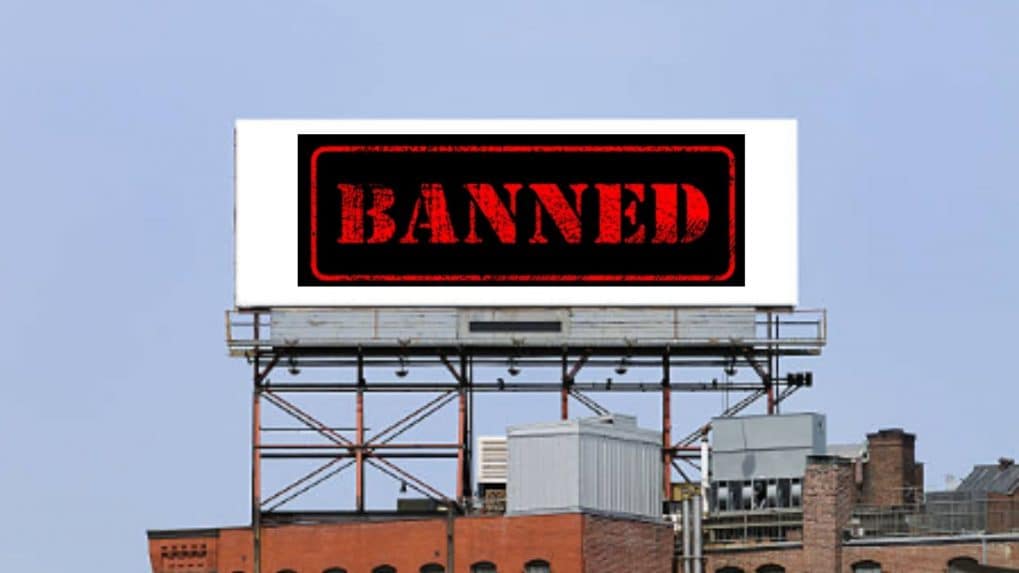Rooftop hoardings in Maharashtra face ban; panic grips OOH media owners, agencies
The Indian Outdoor Advertising Association (IOAA) has raised concerns about what it sees as unilateral policymaking without stakeholder consultation.
ADVERTISEMENT
The Maharashtra government’s decision to accept the recommendations of the Justice (Retired) Dilip Bhosale Committee on hoarding reforms has triggered alarm across outdoor advertising industry. With the panel calling for a blanket ban on rooftop and dead-wall hoardings, the sector—already battling regulatory uncertainty—is in what industry insiders describe as “panic mode.”
The Maharashtra cabinet approved the recommendations stemming from a probe in the May 2024 Ghatkopar hoarding collapse that killed 16 people, sets the stage for a sweeping overhaul of outdoor advertising norms in the state. The home department will direct municipal corporations and local bodies to conduct immediate surveys of all hoardings within their jurisdictions and dismantle illegal structures without delay.
The Indian Outdoor Advertising Association (IOAA) has raised concerns about what it sees as unilateral policymaking without stakeholder consultation. On September 29, the IOAA called for an urgent meeting of its members to deliberate on the implications of the government’s move. IOAA will be writing to the government for a consultation meeting to discuss the issue.
“The proposed government resolution (GR), which will flow from the Bhosale Committee’s findings, is likely to be binding on the BMC,” said the owner of a leading outdoor media agency. “This will have a serious adverse impact on the industry, particularly rooftop hoardings, which constitute a significant portion of our revenue. Rooftop structures in high-traffic areas like railway stations, highways, and marketplaces are premium inventory. Their removal will not only shrink options for advertisers but also destabilize the economics of OOH campaigns in Mumbai and beyond.”
Another IOAA member echoed the concern, stressing that the decision could cripple businesses already grappling with rising compliance costs. “The sudden elimination of entire formats, without phased implementation or industry dialogue, is like pulling the rug from under our feet. Rooftop and dead-wall hoardings aren’t just visual spaces—they represent livelihoods of contractors, fabricators, and thousands of workers in the OOH supply chain. A drastic step like this will hit smaller operators the hardest.”
An executive with an OOH firm warned of the urgent need for collective action: “We must immediately reach out to local and regional OOH associations in Maharashtra to coordinate a united response. If the recommendations are enforced in their current form, the impact will be severe—not just on big-ticket players but also on the ecosystem of small vendors and agencies that sustain the outdoor medium. It’s not just about losing sites; it’s about an entire industry facing existential risk.”
The Bhosale Committee’s expansive report, lays out sweeping reforms intended to improve safety, accountability, and transparency in outdoor advertising. Key recommendations include:
Ban on rooftop and dead-wall hoardings: The panel states these structures are unsafe and often poorly maintained, making them vulnerable to accidents.
Stricter size restrictions: No hoarding should exceed 40 feet by 40 feet, regardless of location.
Clear display of permits: Every hoarding must visibly carry permit details and undergo annual structural stability certification.
Traffic safety protocols: Digital billboards with moving graphics, videos, or flashing lights should not be allowed near highways, junctions, or pedestrian-heavy zones. Even where permitted, digital content must remain static for several seconds, and nighttime restrictions should apply.
Pedestrian safety: Hoardings that obstruct footpaths or block road signs, signals, and sightlines must be removed immediately.
Coordinated approvals: The panel calls for a multi-agency nodal system, involving the BMC, Police, Railways, and Traffic authorities, to grant and monitor hoarding permissions.
Accountability and penalties: Both advertisers and officials enabling violations should face strict action, alongside public awareness campaigns to highlight the dangers of illegal hoardings.
A leading outdoor media agency executive said, "Rooftop hoardings are not just advertising spaces—they are significant capital investments. Agencies and media owners have spent crores acquiring prime locations and erecting structurally compliant hoardings. A sudden ban jeopardizes not only these investments but also the long-term viability of the outdoor advertising sector in Maharashtra."
For advertisers, the reforms mean drastically reduced inventory in a market already struggling with supply-demand imbalances. With rooftop and wall-mounted sites making up a large share of Mumbai’s OOH ecosystem, marketers fear higher rates, reduced visibility, and shrinking flexibility for integrated campaigns.
“The government’s concern for public safety is justified, especially after the Ghatkopar tragedy,” one senior media buyer said. “But the absence of industry consultation creates distrust. Reforms should balance safety with economic realities. A blanket ban may solve one problem but create another—driving brands away from OOH altogether.”
As the state prepares to formalize the recommendations into policy through a government resolution, the industry is bracing for turbulence. The IOAA is expected to lobby aggressively for phased implementation, exemptions, or modifications to some of the report’s stricter clauses.
For now, however, the mood across advertising corridors is unmistakable: panic, uncertainty, and fear of a future where the cityscape—once dominated by billboards—could be stripped bare of its most visible advertising assets.

